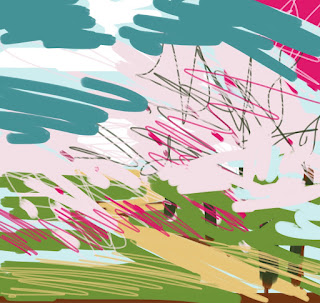In fact it was earlier in the year when I did some drawings based on photographs I remembered how much I enjoyed it - though it is definitely a particular mind state - the combination of really careful observation, focused attention, shutting out everything else - being able to rub out (phew!) and all those yummy colours in my crayon tin! Heaven.
Small Feather, Blue Stones
It brought back so many memories ranging from story-board "snowman" type cartoons I did on my graphic design course to copying by sight and colouring endless Disney characters when I was about eight years old. I have a vivid memory of being really pleased with my Lady and the Tramp dogs! Then I remembered an entire set of characters I drew as the basis of a book when I was about twelve......
I took my kids to the Derwent Pencil Museum in Keswick when they were younger - a museum all about pencils and crayons - with history dating back to 1500. It was very interesting even for those not in love with all those tins and colours. I was treated to a luxury set of 72 colours - and now I am really beginning to appreciate them.
Unfortunately they seem to have been affected by the recent bad flooding in Cumbria and are closed for refurbishment but I am hopeful you can still buy online.
Here is the link





















































